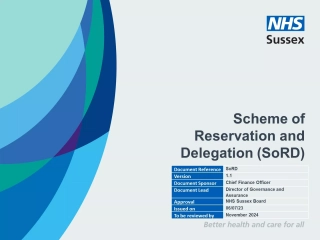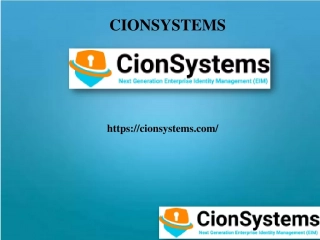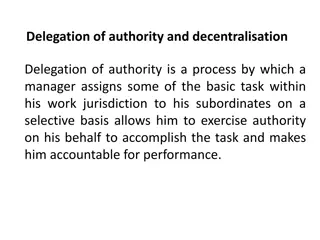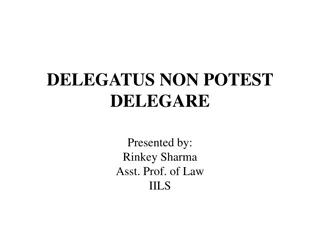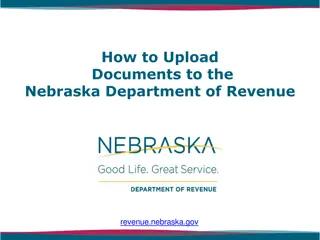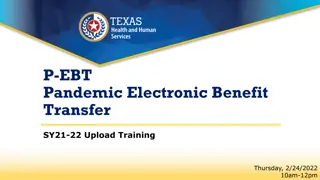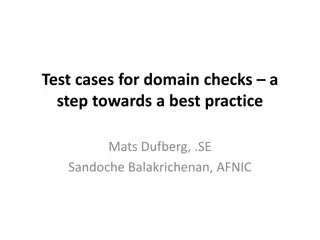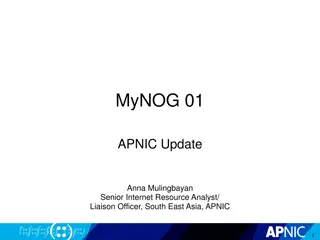
Understanding Web PKI Delegation and Revocation Challenges
Explore the challenges in Web PKI regarding delegation and revocation, including issues with certificate revocation lists, inefficient communication, and requirements for secure delegation in Content Delivery Networks (CDNs).
Download Presentation

Please find below an Image/Link to download the presentation.
The content on the website is provided AS IS for your information and personal use only. It may not be sold, licensed, or shared on other websites without obtaining consent from the author. If you encounter any issues during the download, it is possible that the publisher has removed the file from their server.
You are allowed to download the files provided on this website for personal or commercial use, subject to the condition that they are used lawfully. All files are the property of their respective owners.
The content on the website is provided AS IS for your information and personal use only. It may not be sold, licensed, or shared on other websites without obtaining consent from the author.
E N D
Presentation Transcript
SoK: Delegation and Revocation, the Missing Links in the Web s Chain of Trust Laurent Chaut*, AbelRahman Abdou , Ralf Sasse*, Christoph Sprenger*, David Basin*, Adrian Perrig* *ETH Zurich, Carleton University IEEE Euro S&P 2020 2020. 10. 7. Joonhee Lee jhlee2019@mmlab.snu.ac.kr
Outline Introduction Revocation and Delegation Trust Models Proxy Certificates Delegated Credentials Analysis Conclusion 2 / 18
Certificate Revocation Problem Certificate revocation: A challenge in the Web PKI Certificate Revocation Lists (CRLs) grow linearly in the number of revocations Inefficient communication to browsers CRLs and Online Certificate Status Protocol (OCPS) require an extra RTT Increased page-load delay, possible failure to receive a response Browsers are going to disable online revocation checks Instead, they rely upon small sets of emergency revocations through updates OCSP stapling places an additional burden and reliance on CAs Tradeoff between efficiency and security: Browser vendors favor efficiency 3 / 18
Requirements for Secure Delegation Content Delivery Networks (CDNs) require a secure delegation Delegation problem is directly related to that of revocation Insecure approaches (key sharing) vs. Heavily depend on CA support Solution: Domain owners have full control of their domain and subdomains Requirements for any possible solution: Domain owners should be able to decide on the validity period or revocation status of their own certificates Domain owners should be able to delegate all or a subset of their privileges to third parties, without sharing a private key with them 4 / 18
Web Service Delegation to CDNs Authoritative: CDN s name servers as authoritative for the domain CDN take full control over the resolution of the entire domain Edge server must know the corresponding private key (of example.com) CNAME: Redirected through a DNS Canonical NAME (CNAME) record More find-grained mapping with the redirection of specific subdomains Edge server must know the private key of the subdomain (s1.example.com) URL rewriting: URLs of resources are redirected by the origin server Most fine-grained, but CDN s features are lost (ex. DDoS prevention) Less significant delegation: CDN s own certificate is accepted 5 / 18
Revocation Delivery Schemes Category Who How Schemes Note CRL OCSP Additional latency Privacy issue Client-driven Browser Fetch the revocation list Attacker can drop the stapled response Server-driven TLS Server Attach a OCSP response from CA OCSP stapling CRLSets OneCRL CRLite Google s Chrome Mozilla s Firefox Browser Vendors Vendor-driven Push a set of critical revocations Network Devices RevCast RITM Middlebox-driven Deliver revocations to end hosts 6 / 18
Private Key Delegation How to delegate browser-accepted certificates and private keys Key sharing: Domain owners directly upload private keys Key management issue Subject Alternative Name (SAN): A certificate containing multiple domains Revocation problem Keyless SSL: A key server is maintained by the domain owner Cryptographic security issue SSL splitting: Origin server computes message authentication codes Additional latency DANE-based delegation: Add a TLSA record contains CDN s certificate Extra round trip 7 / 18
Related Certificate Features Name constraints extension CA certificate with a limited scope (ex. .example.com ) Major browsers does not check name constraints A dishonest intermediate CA can issue certificates for arbitrary domain names Short-lived certificates Short validity period reduces the attack window after a key compromise An extra burden on CAs Certificate Transparency (CT) Public append-only certificate logs to detect illegitimate CA actions CT must be accounted for when proposing a new scheme 8 / 18
Overview of Trust Models 9 / 18
Proxy Certificate (PC) An X.509 certificate signed by an end-entity certificate (not by CA) PC has its own public and private key pair, distinct from the end-entity PC has as identity derived from the identity of the issuer of the PC For example, an end-entity of *.example.com can issue s1.example.com PC PCs must include the ProxyCertInfo X.509 extension Proxy certificate for delegation Domain owner can issue and provide PCs to CDNs without help of CAs Holder of the PC can legitimately serve content for the specified domain Number of requests to CAs can be reduced No need to logged for CT: Not issued by Cas No revocation: Short validity periods (4 days recommended) 10 / 18
Proxy Certificate Use Cases Content delivery Edge server requests a PC Domain owner issues a PC Possible automation by ACME Private, separated subdomains Different private keys for subdomains independently from CAs Proxy certificates need not be included in CT logs Dynamic security policies Domain owner can change X.509 field or extension values in each PC 11 / 18
Delegated Credential Minimized data structure similar to X.509 certificate Composed of a public key, a validity time, a signature and its algorithm Same identity with the origin certificate, short validity period (max. 7 days) Own key pair, and public key signed by the origin s private key Included in TLS handshake message extension No revocation Origin Server Delegated Server Origin Certificate Origin Public Key Delegated Credential Credential Public Key Origin Certificate Origin Public Key TLS Handshake Origin Private Key Credential Private Key Sign & Issue Client Signed by CA Signed by Origin Signed by CA 12 / 18
Evaluation Criteria Revocation-related benefits CA revocation: Can revoke root and intermediate CA certificates Damage-free CA revocation: Should not invalidate certificates before CA compromised Leaf revocation: Can revoke the leaf certificate or credential Autonomous revocation: Can revoke leaf certificate without reliance on a CA Delegation-related benefits Delegation: Domain owners can transfer their privileges Delegation without key sharing: Domain owners can delegate without sharing any private key 13 / 18
Evaluation Criteria (Cont.) Security benefits Domain-based policies: Domain owners can define policies No trust-on-first-time (TOFU) required: Do not require trusting a first time Preserves user privacy: Should not reveal any domain-related data Efficiency benefits Do not increase page-load delay : Should not increase the page-load time Low burden on CAs : Should not send high number of requests to CAs Reasonable logging overhead: Should not log short-lived certificates 14 / 18
Evaluation Criteria (Cont.) Deployability benefits Non-proprietary: Should not bound to or controlled by a particular vendor No special hardware required No extra CA involvement: Do not require the participation of CAs No browser-vendor involvement: Do not require the participation of vendor Server compatible: No changes are required on the server side Browser compatible: No changes are required on the client side Cross-category benefits No out-of-bound communication: Do not require to use a different channel 15 / 18
Conclusion Delegation and Revocation: Two sides of the same coin It is possible to simultaneously address both issues Single long-lived certificate: practical, low pressure, better deployment Short-lived credentials: not sharing private keys with third parties Delegated Credentials and Proxy Certificates More flexibility to domain owners Both address similar issues of delegation to CDNs Evaluating Numerous Schemes Combinations of schemes can be a better solution 18 / 18

